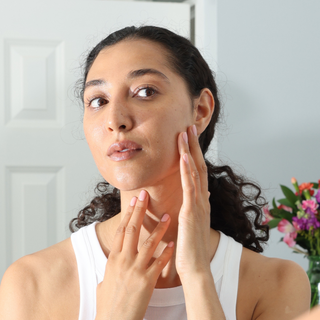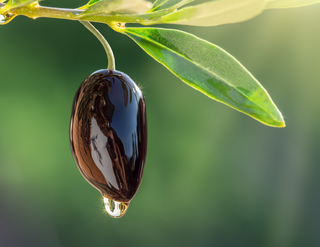Dehydrated vs. Dry Skin
Have you ever wondered what the difference is between skin that is dry versus skin that is dehydrated? While these two terms are often used interchangeably in the context of skincare, they actually have very different underlying causes. Dry skin signifies a lack of sebum or oil, while dehydrated skin indicates a lack of water.

Signs Your Skin is Dehydrated:
- Sensitive - Dehydrated skin is often more prone to sensitivity since lack of water can compromise the skin barrier, making it more susceptible to external factors like sun exposure and extreme temperatures.
- Rough - Lack of sufficient water affects the outermost layer of the skin known as the stratum corneum. When this layer is parched, it tends to lose its smooth texture.
- Dull - Dehydrated skin often appears dull because the lack of water can affect light reflection on the skin's surface. When the skin is well-hydrated, it reflects light more evenly, giving it a radiant and healthy glow.
- Irritated - Lack of water compromises the skin's protective barrier allowing irritants to penetrate more easily leading to increased sensitivity and redness.
Can Oily Skin Types Suffer From Dehydrated Skin?
Yes! Remember, dehydration is a lack of water, not oil, and can affect any skin type including those with excess oil production. In fact, sometimes the skin may produce more oil in an attempt to compensate for the lack of hydration. This increases the potential for breakouts.
Skin that lacks oil:
Dry skin is a condition that occurs when the skin doesn't produce enough natural oils to maintain adequate moisture levels. There are several factors that contribute to dry skin types, including: genetics, climate, age, hormonal fluctuations, medical conditions, and over-cleansing. Signs of dry skin you might be experiencing include flakiness, tightness, rough texture, redness, fine lines, and dullness.
Caring for dry and/or dehydrated skin involves a comprehensive approach in order to restore and maintain hydration. Topical products are the best way to support skin hydration, as they provide targeted ingredients that directly impact moisture levels and contribute to a healthier and more radiant complexion.
THURSTY SKIN ™ HYDRATING FLUID: Your solution for dry, dehydrated skin.

StimuCell 5
The cell-energizing actives in our StimuCell 5 complex activate weakened & sluggish skin cells into behaving younger, prompting the appearance of overall skin renewal & rejuvenation. The multifunctional actives regenerate cellular energy stimulating the synthesis of key structural components: collagen, ceramides, & elastin while protecting the skin against dehydration and oxidative stress. Skin barrier function is optimized and cell-to-cell communication is restored, resulting in visible improvements in texture, density, hydration, and firmness.
HydroLock 360
Experience the potent hydrating power of multi-weight hyaluronic acids with our proprietary HydroLock 360. Upon application, your skin receives maximum below-the-surface hydration with medium and low hyaluronan molecules that penetrate deep below the dermis to recharge thursty skin cells and sustain moisture content for long-lasting hydration. High hyaluronan molecules offer immediate surface-level hydration for instant soothing and plumping, diminishing the appearance of fine lines and wrinkles, and giving skin a fresh, youthful glow.
Comprehensive Hydration
Humectants and emollients are crucial components in skincare. Each plays a vital role in maintaining skin moisture, improving elasticity, and creating a smooth and supple complexion.
HUMECTANTS: A humectant serves the function of attracting and retaining moisture. These ingredients draw water from the environment or deeper layers of the skin to the outermost layer, helping to hydrate and plump the skin. Common humectants in skincare include *hyaluronic acid and *glycerin.
EMOLLIENTS: Emollients are lipids or oils that work to fill in the gaps between skin cells, creating a protective barrier. The primary purpose of emollients is to improve the skin's texture. Common emollient ingredients in skincare include *squalane, *coconut oil, jojoba oil, and *allantoin. Their inclusion in formulations helps address dryness by preventing water loss and enhancing the skin's natural barrier function.
*featured ingredients in our Thursty Skin™ Hydrating Fluid








